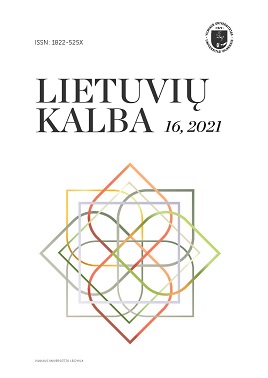Įvardžių jis, ji variantai standartinėje lietuvių kalboje: diamezinė dimensija
Pronoun Variants in Standard Lithuanian: Diamesic Dimension
Author(s): Jogilė Teresa RamonaitėSubject(s): Language acquisition, Sociolinguistics, Baltic Languages, Stylistics
Published by: Vilniaus Universiteto Leidykla
Keywords: language varieties; variation; pronouns; diamesic dimension; spoken language; written language; media language;
Summary/Abstract: The paper deals with variants of personal pronouns, specifically the third person singular nominative case jis/jisai ‘he’ and ji/jinai ‘she’ in Lithuanian. The existence of such variation has been so far ignored by most linguists. The variation of the use of these short and long variants is analysed within the language “architecture” framework first introduced by G. Berruto (1987) and involving different dimensions, of which the diastratic, diaphasic and diamesic are discussed in more detail. The use of pronouns is studied using the data from eight different written and spoken Lithuanian corpora and the proportions of such use are compared. The analysis shows that the variation in the use of pronoun variants is overwhelmingly associated with the diamesic dimension, i.e., the written language typically uses the short variants only while in the spoken language all four pronoun variants are used. The proportion of the long variants increases as the spontaneity of speech increases. There is a difference, however, in the use of masculine and feminine forms as the long variant of the masculine pronoun is used in one third of the cases while the long variant of the feminine pronouns is found in as much as 80 percent of cases in the spoken variety. Other dimensions do not seem to impact this variation to a notable extent given the data available.
Journal: Lietuvių kalba
- Issue Year: 2021
- Issue No: 16
- Page Range: 8-24
- Page Count: 17
- Language: Lithuanian

